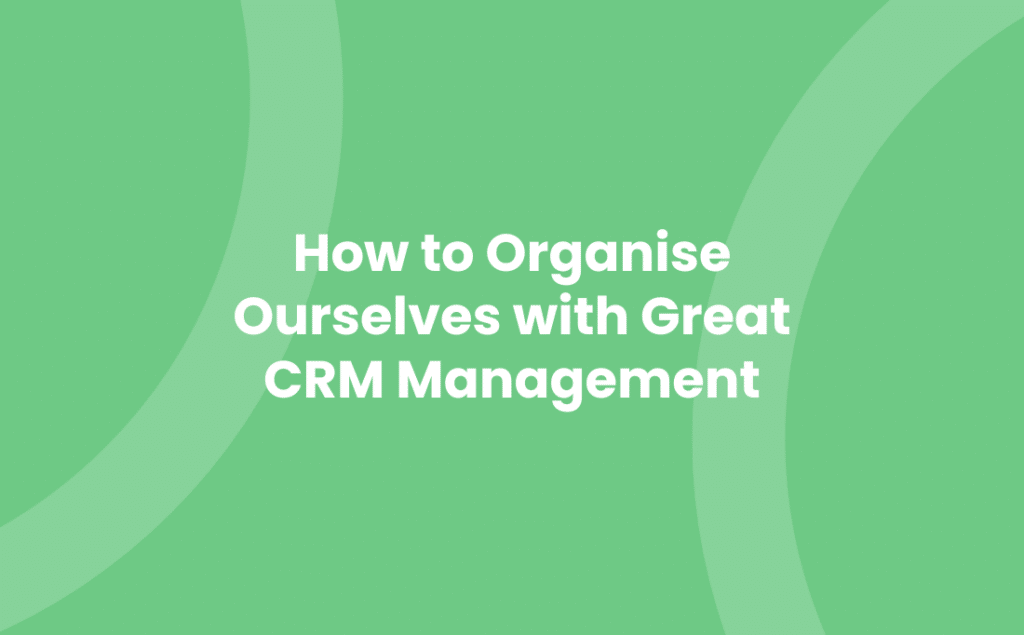Exploring the world of customer relationship management (CRM) can feel like a challenging job. But it doesn’t have to be. With the right CRM system in place, you’re not just managing data, you’re enhancing customer interactions and experiences.
CRM is more than a tool, it’s a strategy that can transform your business. It helps you understand your customers better, anticipate their needs, and segment your efforts effectively. The result? Stronger relationships and increased customer engagement.
So, if you’re ready to simplify processes, automate communications and take your CRM management to the next level, you’re in the right place. Let’s dive deeper into the power of effective CRM management.
Key Takeaways
- CRM management is not just about managing data; it’s a strategy that essentially enhances customer interactions and experiences, leading to stronger relationships and increased customer engagement.
- Utilising the power of mobile CRM, businesses can access and manage their CRM platforms on the go, be it on iPhones or any preferred devices. The functionality of mobile CRM apps greatly varies, offering everything from a read-only view of sales and contacts to complete seamless experiences.
- The emergence of AI-powered Sales Assistants offers task prioritisation suggestions increasing productivity, with the Automations feature allowing creation of task templates and follow-up emails.
- A top-notch CRM strategy is critical, featuring customer service automation tools like chatbots, hyper-personalisation based on customer data, and insights, along with unified CRM systems to enhance business efficiency.
- CRM systems play an instrumental role in enhancing customer interactions by accumulating customer interaction information, facilitating efficient management of customer accounts, maintaining service quality, and improving overall customer satisfaction.
- CRM automation simplifies processes, allowing focus on high-value tasks, promoting team productivity, and enabling creation of multichannel marketing campaigns.
- The use of contact screen menus in CRM management allows a detailed view of customer engagement stages, segmentation of customer data, and helps keep the CRM environment updated for effective sales lead tracking.
- Modern CRM systems offer a range of features, including marketing automation capability, workflow delineation, page customisation, and a graphical representation of data flow, contributing to making your CRM system work towards the bigger organisational goal.
Exploring the World of CRM Management
Exploring the CRM waters can be overwhelming at times. It’s not just about managing customer relationships, but also about capitalising on key business opportunities. A proficient CRM can show a list of action-oriented lists within contact screens. These could be recently viewed, added, and contacted.
Think of it as a quick reference for your daily plan of action. It could be targeted contacts from a recent webinar or prioritised leads. The more detail you put into this, the better your chances of landing a successful interaction. Want to target by specific attributes? The system has you covered, allowing you to segment by title, city, keywords, influence groups and many more.
Let’s talk mobile CRM. In today’s fast paced world, being able to access business tools on the move is a blessing. So, remember to opt for a CRM platform that’s compatible with your team’s preferred mobile devices. This could be iPhones for everyone, or if you’re in a BYOD (bring-your-own-device) environment, it needs to support multiple platforms.
The functionality of mobile CRM apps vary wildly. Some offer a mere read-only view of your sales pipeline or contacts and hold off updates until you’re back at a desktop. On the other hand, there are apps providing a seamless mobile experience, allowing you to do everything you’d do on a full-scale computer.
The emerging concept of the Sales Assistant has been a game changer. Powered by AI, it makes suggestions on what to prioritise throughout your day. The Automations feature, backed by pre-made templates for tasks and follow-up emails, does wonders for your productivity.
Adding to that, improved functionality of the Automations feature has supercharged it into a full-blown marketing tool. The trigger setup allows you to plan events based on decisive actions like email clicks.
But, before we investigate deeper into the rabbit hole, let’s pause for a brief look at Contact-Center Automation (CCA). It’s a sophisticated integration system that seamlessly coordinates…
Understanding the Importance of CRM Strategy
One of the key factors to enhancing your business efficiency is capitalising on your CRM strategy. With the rise of customer service, automation in CRM systems, and an increased focus on personalisation – your CRM strategy must be top-notch. But why is it so vital?
Sales Force Effectiveness plays a significant role in CRM. Its core purpose? To maximise sales and increase productivity. It’s the primary reason behind businesses adopting CRM software. In fact, CRM trends identified in 2021 include focusing on customer service automation like chatbots, hyper-personalisation based on customer data, and insights, along with the usage of unified CRM systems.
Venturing deeper, CRM vendors assist sales productivity using diverse tools that assess the efficacy of ads appearing in unconventional platforms like 3D video games. Pharmaceutical companies, for instance, have been early adopters of Sales Force Automation (SFA), some already moving to third or fourth-generation implementations. Even though this, these deployments have primarily remained within SFA, a finding that has garnered much interest amongst Gartner analysts.
With the use of AI technology, CRM systems can become smarter, easing up your daily task load. Enter the Sales Assistant, which uses AI to give you suggestions on tasks to prioritise throughout your day. An extension of this AI application can be found in Automations, which houses pre-requisites for sales tasks like follow-up emails and errands.
Taking the functionality of Automations up a notch, Pipedrive recently introduced enhanced functionality to this feature by adding triggers and events, including marketing automation tools. With these enhancements, you can set up events and triggers based on specific actions like clicking on a link in an email.
Let’s not forget about Contact-Center Automation (CCA), an integrated system designed to orchestrate contacts between your organisation and the public. By employing Contact-Center Automation, repetitive and banal aspects of a contact centre agent’s role are significantly reduced. Automated contact centres can reroute customers through a series of commands to swiftly solve queries, improving overall customer experience.
Enhancing Customer Interactions and Experiences
From product customisation to planning personalised customer interactions, CRM systems prove to be a game-changer for organisations across the board. By accumulating information across customer interactions, CRM applications help you uncover hidden patterns. This wealth of data enables you to cocktail your product or service offering to the individual preferences of your customers. Higher perceived product quality is majorly a byproduct of this customisation, often driving increased customer satisfaction.
A tool as inclusive as a CRM system is not just about understanding the customer better, it also improves the internal efficiency of the organisation. Take, for instance, the timely and accurate processing of customer orders and requests. The CRM technology is a great facilitator of this process, efficiently managing customer accounts and maintaining a quality service experience.
Let’s talk a bit about choosing the right CRM system for your business. The ideal CRM system should be one that elevates your communication quality and ensures a holistic and excellent customer journey. How does it do it? It starts with identifying and engaging the right customers. Leveraging insightful data allows you to learn, identify, and attract the right leads. Then it’s about turning these leads into customers with the power of predictive insight and data-driven buyer behaviour.
The story doesn’t end post the customer onboarding process. It extends into providing superior customer interaction, arming your sales team with a complete view of the customer history, purchasing patterns, and any specific data that lubricates your customer service. Always knowing where a customer is in your overall sales lifecycle helps you target campaigns and opportunities for maximum engagement.
In case you’re wondering if incorporating a CRM system will be an added burden to your team, you couldn’t be more wrong! Improved visibility of processes streamlines operations, boosting team productivity manifold. Now your team can channel their focus on what matters – serving customers with unparalleled service and experience.
From stepping up customer interactions to managing the customer journey, a quality CRM system promises to take your business a notch higher in terms of efficiency as well as customer satisfaction. Remember, the right CRM system is one that benefits all – the customer, the team, and the business.
Simplifying Processes with CRM Automation
In this fast-evolving business world, simplifying and automating processes are essential. This requirement gets handled capably by CRM systems. Regardless of your business’s scope and size, a CRM system assists in streamlining your business’s more complex aspects.
Focusing first on small businesses striving to expand, the automation of processes through CRM technologies plays a pivotal role. It enables employees to concentrate on higher-value tasks instead of getting tied down by tedious, repetitive activities. Later, you’ll find improved efficiency freeing up resources which increases the team’s productivity.
On the other hand, enterprises also reap benefits from CRM software. Engaging customers might seem intricate at times but CRM simplifies this beautifully. It amplifies the quality of interaction, making the customer’s journey pleasant and more intuitive.
Also, CRM systems offer the fantastic ability to conjure multichannel marketing campaigns. Coupling this with well-nurtured, sales-ready leads, and cohesive team alignment provided by planning and real-time tracking tools, you’re able to design marketing strategies that will undoubtedly resonate with your clientele. The nurturing of leads ensures your marketing efforts are directed right at your target audience.
Think of your CRM dashboard as the control centre, offering you a comprehensive summary of your brand reputation. This data-analysis platform enables prioritising leads that translate into business growth potential. Swift adaptations to these insights can fuel smarter and targeted automated decisions.
But which contacts should you focus on? Enter the Contacts Screen menu. This CRM feature shows a series of action-oriented lists that include recently viewed, added, and contacted leads, identified crucial contacts, and those you need to stay in touch with. If your sales manager hands you contacts from a recent webinar, for instance, hit the ‘Recently added’ tab. Segmentation allows you to target your efforts and filter out noise, focusing on attributes that match your buyer personas.
Now consider the impact of a mobile-centric world on CRM systems. Today, ensuring your CRM software is compatible with your team’s mobile platform is vital. Whether every employee receives an iPhone or operates in a BYOD environment, effectively supporting multiple protocols is a hefty factor in your CRM choice. Thoroughly evaluate the app’s capabilities. Some merely offer a read-only glimpse of your sales pipeline or contacts. In contrast, others provide an extensive, responsive experience, empowering you to conduct all your tasks using a handheld device.
Taking CRM Management to the Next Level
In your journey to elevate CRM Management, your contact screens menu becomes a valuable asset. These actionable lists display contacts in various stages of engagement. Whether they’ve been recently viewed, added, contacted, marked important or need some touching up, your contact screen keeps you updated. To manage potential sales leads from a recent webinar, for instance, selecting ‘Recently added’ gives you the chance to break these down into targeted lists—a mere tip of the iceberg when it comes to the dynamic potential of CRM.
Customisability enables segmentation by title, city, keywords, influence groups, and countless other attributes—forging a smooth pathway towards finding the ones who align most with your buyer personas.
But, not everything about CRM systems may be rosy. Be honest, you’ve come across CRM platforms with well-worn UI and clumsy operations—CRM that makes you feel like you’re living in a past decade. From battling clunky UIs to environments that are not exactly Gmail or Outlook-friendly, CRM systems can sometimes leave much to be desired. Behold the bane of data entries that are more convoluted than they need to be!
Make no mistake—CRM systems have come a long way from their humble contact management software beginnings. As many of these systems have blossomed into more feature-rich, cloud-based CRM solutions, there’s been a compelling shift towards marketing automation capability, delineating workflows, and crafting dashboard designs that are simple, yet scintillating.
Your next station to stop at on this journey of CRM optimisation? Page customization. With the right CRM system, you’re in the driver’s seat to tweak fields and layouts to enhance performance. Speedy page load times become salsa to your chips while you’re sifting through contacts, leads, and opportunities.
There’s more in store for you, though. A visual treat awaits with the layout of Schema Builder. This clever tool provides a graphical representation of data flow as it zips between differing objects. You’ll discover the connections tying together your contacts, leads, and opportunities, providing a holistic understanding of your CRM world.
Remember, taking CRM management to the next level is not a steep mountain climb. It’s about leveraging tools, embracing features, and making your CRM system work towards the bigger picture. Embrace the beauty of personalised and symbiotic workflow— it’s waiting for you just around the next corner.
So, you’ve seen how digital transformation isn’t just a buzzword. It’s a strategic necessity for businesses wanting to stay ahead of the curve. By leveraging new technologies, you can push past the constraints of legacy systems and optimise your business results. Remember, it’s not about the titles but the impact. Your leadership can drive this change, focusing on technology to boost revenue growth and enhance customer experiences. Yes, the transition might be complex but the long-term value far outweighs the challenges. Don’t just meet customer expectations, exceed them. Embrace the digital era and watch your business thrive.
Frequently Asked Questions
Q1: Why is leveraging new technologies important for businesses?
Adopting new technologies enhances efficiency and productivity in businesses. It helps in meeting evolving customer expectations, thereby improving their value, and achieving positive business outcomes.
Q2: What challenges do legacy systems pose for digital transformation?
Legacy systems can hinder digital transformations as they may be incompatible with new technologies or costly to upgrade. This difficulty can pose a challenge in assessing the long-term value of adopting new technology.
Q3: How does leadership play a role in successful digital implementation?
Leadership is critical; driving digital transformations requires the ability to effectively utilise technology to optimise customer experiences and generate business results. Leaders need to remain focused on this goal rather than dwelling on fancy titles.
Q4: What benefits can companies gain by embracing digital technologies?
Transitioning to digital technologies allows businesses to exceed customer expectations while maintaining traditional values, thus enhancing customer value and increasing revenue growth.
Q5: How can businesses execute a successful digital transformation?
A successful digital transformation requires a strategic approach consisting of steps like identifying clear objectives, focusing on customer needs, establishing new processes, wisely choosing technology, restructuring for change, executing the plan, and allowing space for agility.


